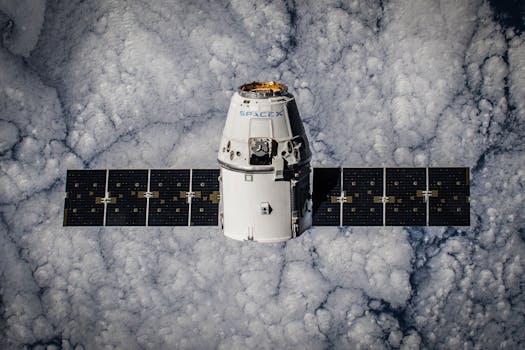
The Future of Satellites: Revolutionizing Global Connectivity
The future of satellites is rapidly changing, with advancements in technology and new applications emerging. The focus keyword, Future of satellites, is an exciting and rapidly evolving field that is transforming the way we communicate, navigate, and understand our planet. From providing internet access to remote communities to enabling precision agriculture, satellites are playing an increasingly important role in our daily lives.
Advances in Satellite Technology

Recent years have seen significant advances in satellite technology, with the development of smaller, more efficient, and more powerful satellites. These advancements have enabled the launch of large constellations of satellites, such as those being developed by companies like SpaceX and Amazon, which will provide global internet coverage and enable a wide range of new applications. Additionally, the use of advanced materials and propulsion systems is allowing satellites to operate for longer periods and provide more accurate and reliable services.
The increasing use of satellites in Earth observation is also providing valuable insights into our planet’s climate, weather patterns, and natural resources. Satellites like the European Space Agency’s Sentinel-2 and the NASA’s Landsat 8 are providing high-resolution images of the Earth’s surface, allowing scientists to monitor deforestation, track ocean currents, and predict weather patterns. Furthermore, the use of satellites in navigation is becoming increasingly important, with the development of new satellite navigation systems like the European Union’s Galileo and the US’s GPS III.
New Applications for Satellites

The future of satellites is not just about providing internet access and enabling navigation, but also about supporting a wide range of new applications. For example, satellites are being used in the development of smart cities, where they provide real-time data on traffic patterns, energy usage, and waste management. Satellites are also being used in the agriculture sector, where they provide farmers with valuable insights into soil moisture, crop health, and weather patterns.
In addition, satellites are playing a critical role in the development of autonomous vehicles, where they provide precise location and navigation data. The use of satellites in autonomous vehicles is enabling the creation of self-driving cars, trucks, and drones, which will revolutionize the transportation industry and improve road safety. Moreover, the use of satellites in the healthcare sector is providing medical professionals with access to remote health monitoring, telemedicine, and medical imaging, which is improving patient outcomes and reducing healthcare costs.
Challenges and Opportunities

Despite the many opportunities presented by the future of satellites, there are also several challenges that need to be addressed. One of the main challenges is the increasing amount of space debris in Earth’s orbit, which poses a significant risk to operational satellites and the environment. Additionally, the use of satellites raises important questions about data privacy, security, and regulation, which need to be addressed through international cooperation and agreements.
However, the opportunities presented by the future of satellites far outweigh the challenges. The development of new satellite technologies and applications is creating new job opportunities, driving innovation, and improving our daily lives. As the satellite industry continues to evolve, we can expect to see new and exciting developments that will transform the way we live, work, and interact with each other.
See more:
